Featured Image: Tamara Susa
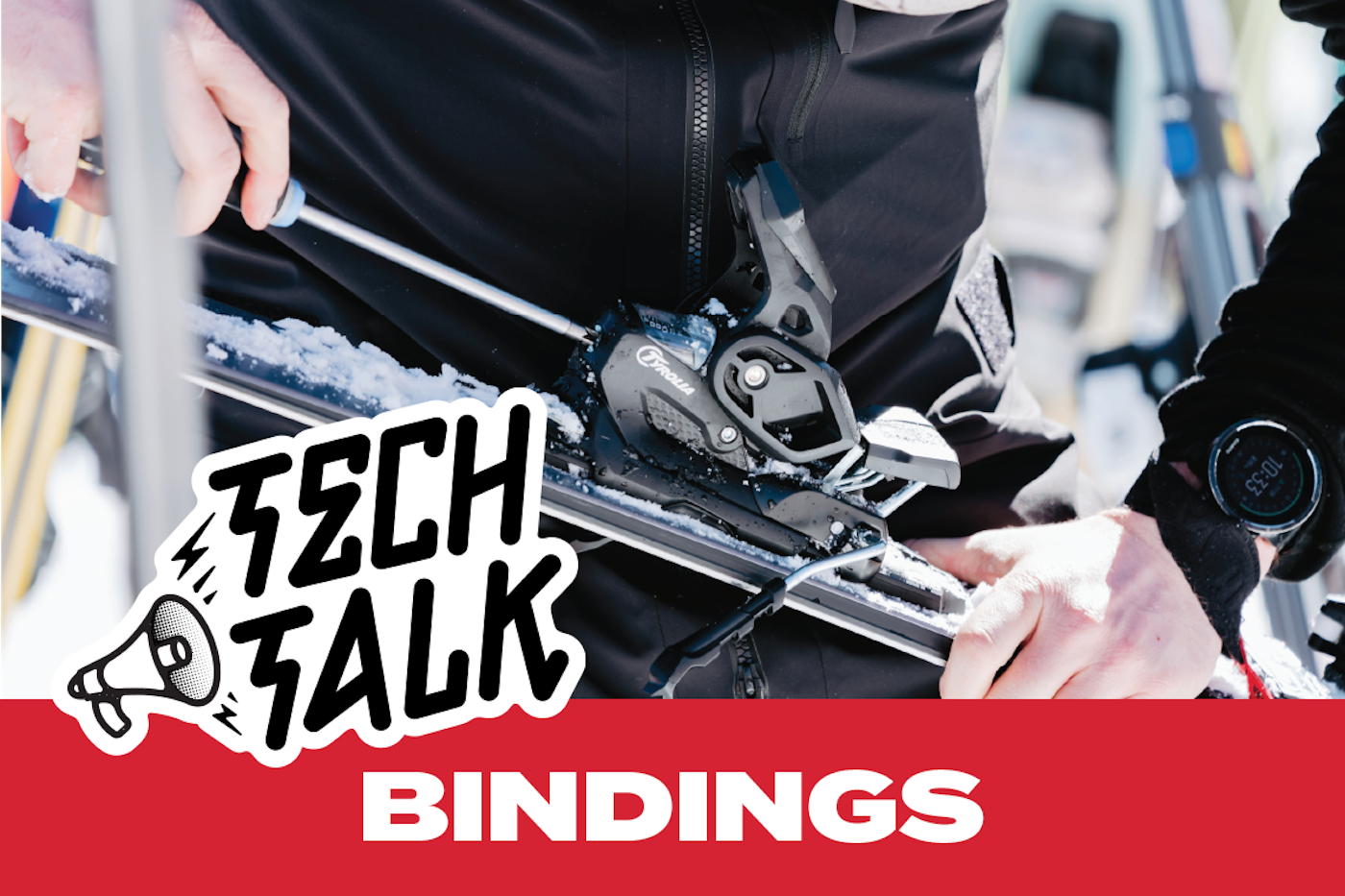
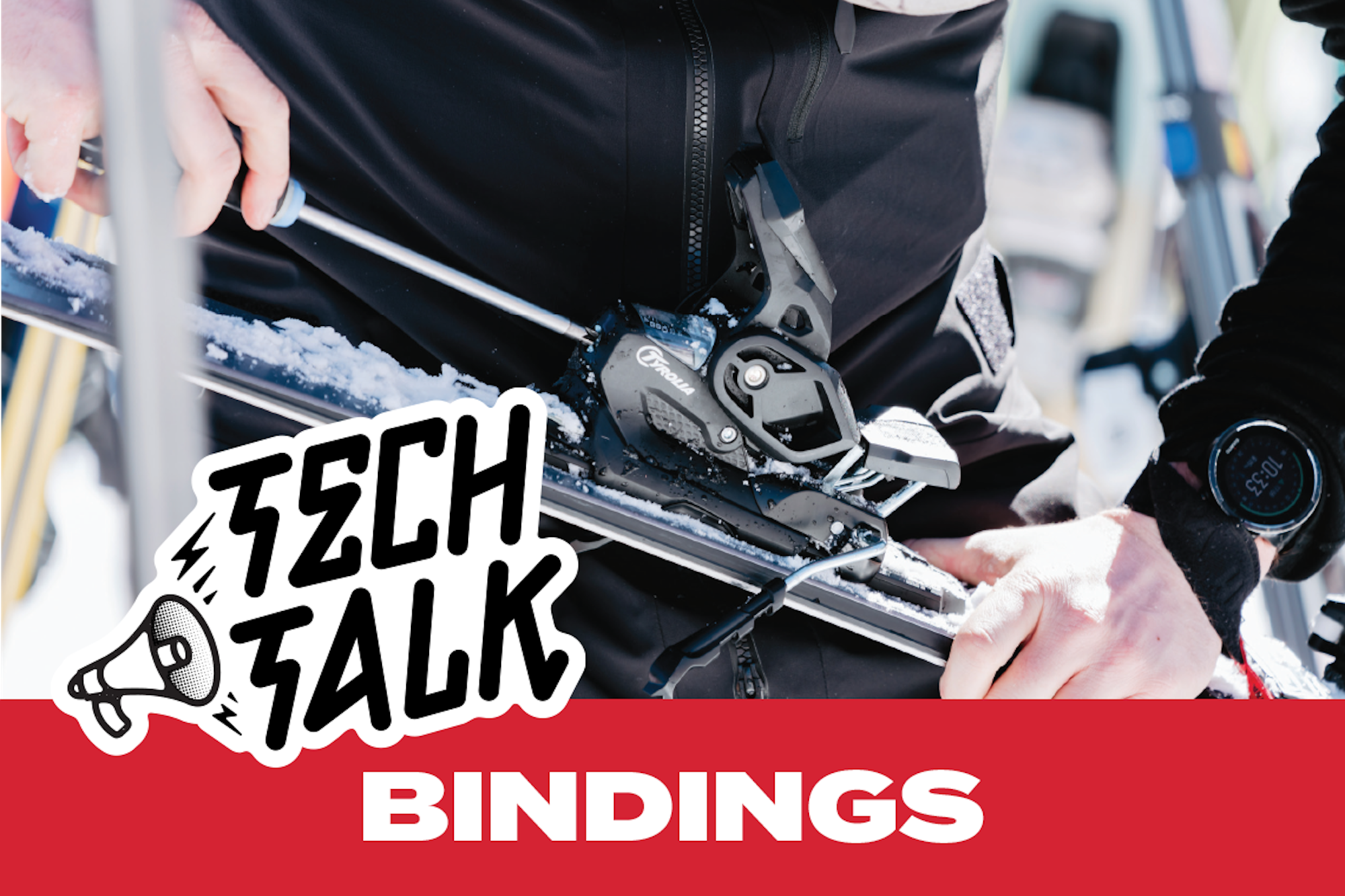
Cutting through the jargon that surrounds ski gear can be tough. To help you better understand the products you need for a great day on the hill, we’ve brought in the expert Gearheads from Backcountry.


Mikell Bova
Age: 37
Number of years as a Gearhead: 4
Favorite Place to ski: Wasatch Mountains, UT
Favorite après drink or snack: Miller Lite
Tell us a little about yourself:
I grew up skiing bumps and park competitively before the freedom of the backcountry came calling. While I still enjoy lift-served skiing, you’ll likely find me on skin track most days in the pursuit of fresh snow and steep descents.
MIKELL SAYS…
What are the major binding types on the market and who are they meant for?
Alpine bindings are the most common and traditional style of binding. Primarily used for resort skiing, they hold your boot in place via lips on the toe and heel of your boot sole. Alpine Touring bindings can be split into three categories. First are tech bindings, which use pins to hold your boot in place and are primarily meant to be skied out of bounds, though plenty of people use them in-bounds as well. Second are Hybrid AT bindings, like the Marker Duke PT, Salomon Shift and Cast Freetour, which utilize pins in the toe piece for uphill travel and a traditional toe/heel mechanism for skiing down. Finally, frame bindings are the most economical option and consist of a traditional-style binding with a frame that connects the toe and heel. When traveling uphill, the heel releases from the ski and the toe piece pivots to allow a walking motion.
What should people keep in mind when it comes to boot/binding compatibility?
Traditional alpine ski boots have a uniform sole and work with any alpine bindings. Touring boots or any boot with a GripWalk sole will have a different shape. Basically, if have a ski boot with a rockered sole you’ll need a ski binding with an adjustable toe height. Many touring-specific ski boots won’t work with alpine ski binding since they lack the smooth AFD plate that is found under the ball of your foot. Each boot sole has a compatibility number and you should be sure your binding shares the same compatibility number. It can get pretty complicated, so it’s best to contact your local ski tech or hit up a Gearhead on Backcountry’s website to make sure you have compatible boots and bindings.
How do I decide where to mount my bindings?
Most skis have a recommended mounting point marked on the ski where the builders decided it will ski the best. It’s usually in the center of the sidecut. That said, some skiers prefer to have their bindings mounted further forward or even true-center, which balances the swing weight and is beneficial for skiing switch, hitting rails and spinning to win. Mount points are a matter of personal preference but if you haven’t developed one then your best bet is to go with the manufacturer’s recommendation.
What brake width should I choose?
Brakes are the arms attached to your heel piece that slow the ski down when the binding ejects. Too narrow and they won’t engage when your ski comes off. Too wide and you risk catching a brake arm when you are carving. You’ll want to select a brake width that is as close as possible to the waist width of your ski. So, when buying bindings, if you have a 95 mm ski, a 95 mm brake width would be ideal. That said, you can use a brake width that is up to 15 mm wider than the waist width of your ski.
GET TO KNOW THE LINGO…
01. DIN
The Deutsches Institut für Normung (DIN) is the German Institute for Standardization and the DIN value is an industry-adopted scale of release force setting for ski bindings. The lower the number, the easier your boot will release when you fall or come in contact with something (or someone). DIN settings are based on the skier’s weight, height and ability level and should be set by a trained professional to avoid unnecessary injury.
02. ELASTICITY
The amount of travel allowed by a binding before it releases your boot. More elasticity allows for a smoother ride, whereas less elasticity provides more precise turn engagement.
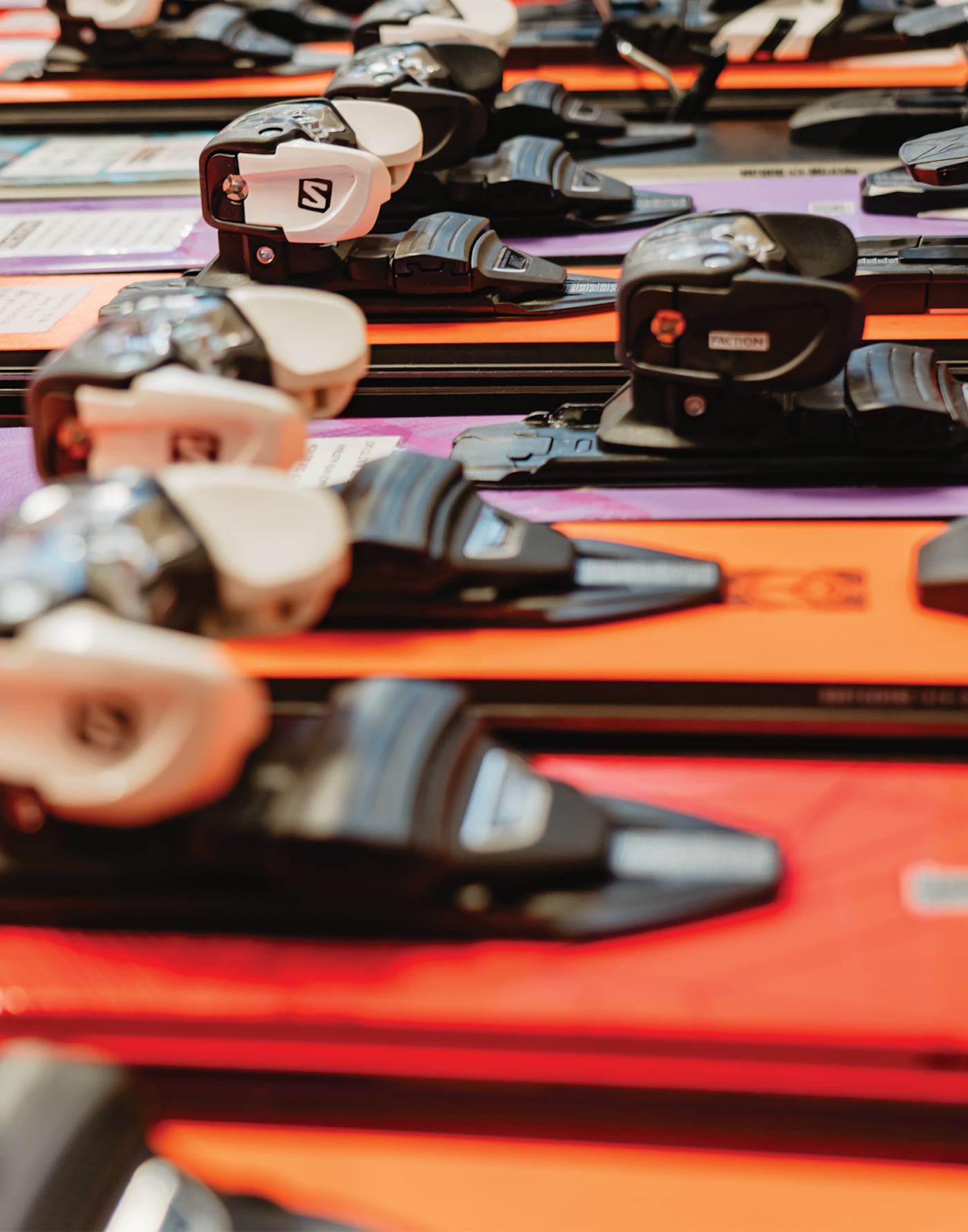
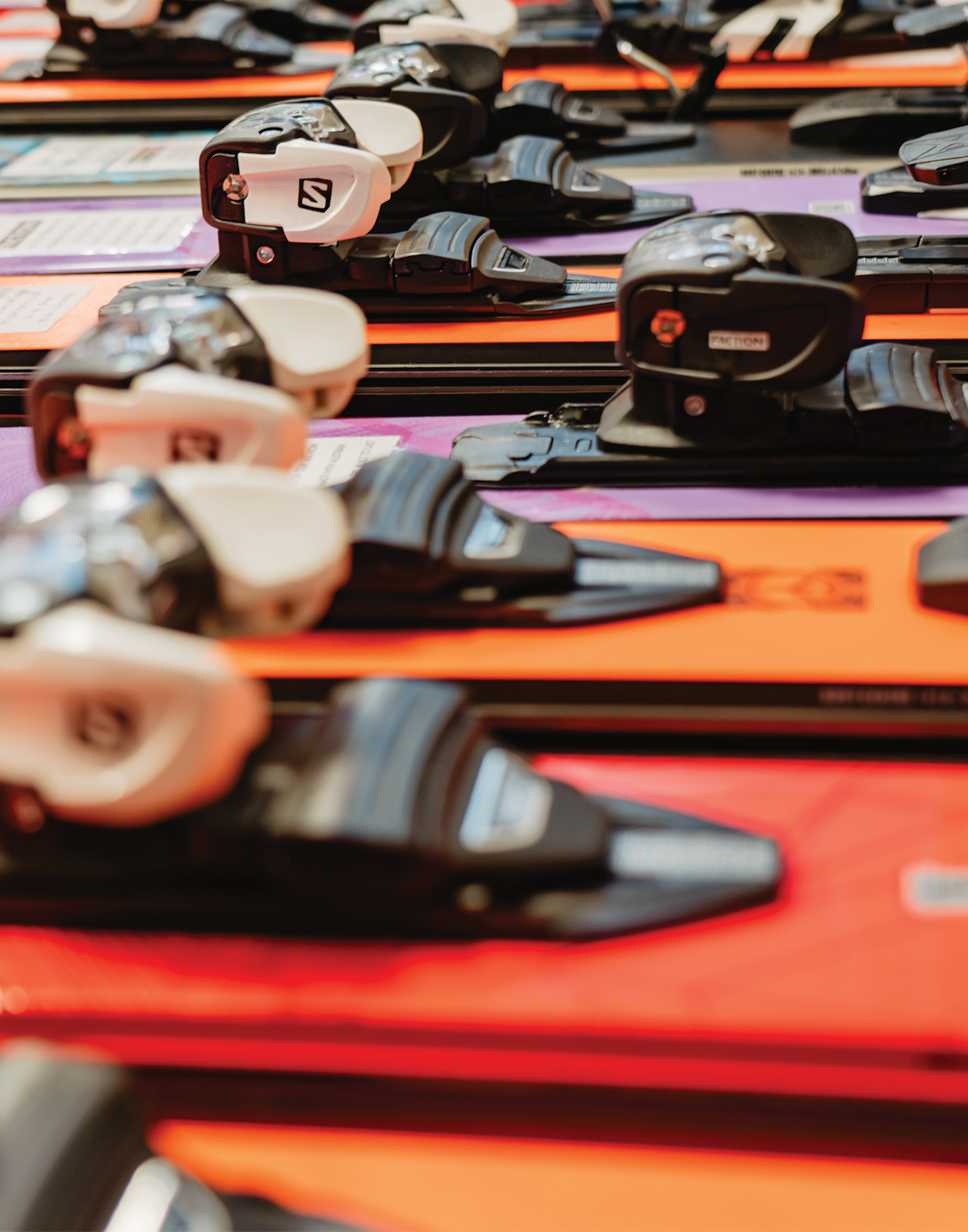
03. DOWNWARD PRESSURE
Controls the release of the boot from the binding in a forward fall.
04. FORWARD PRESSURE
Controls the release of the boot from the binding in a twisting fall, a common cause of ACL injuries.
05. PIN TECH OR LOW TECH
Touring bindings that hold the toe of your boot in place with pins and are designed to reduce weight for uphill travel.
06. AFD (Anti-Friction Device)
A smooth plate that sits under the forefoot of the boot and is designed to minimize friction between the binding and boot, helping with horizontal release.
BEFORE YOU BUY…
Be honest with yourself about the end goal. If you’re going to spend most of you time riding lifts then stick with an alpine binding. Prefer to earn your turns? Then save weight and energy by going with a pin-tech touring binding. And if you want something that can do it all, aim for a hybrid or frame binding.
Match your bindings with your boots. With so many different options nowadays, it’s critical to make sure your binding and boot combination is compatible.
Don’t overdo it on the DIN. Bindings generally get heavier and more expensive as the DIN limit increases. Figure out what your optimal DIN setting is, then select a binding so you land somewhere in the middle-to-high range of its DIN capabilities.
![[Tech Talk] FREESKIER's no-nonsense guide to buying bindings](https://www.datocms-assets.com/163516/1751500367-ttbindings_feat.png?auto=format&bg=FFFFFF&w=100)
![[Tech Talk] FREESKIER's no-nonsense guide to buying bindings](https://www.datocms-assets.com/163516/1751500367-ttbindings_feat.png?auto=format&bg=FFFFFF&w=1200)
![[GIVEAWAY] Win a Legendary Ski Trip with Icelantic's Road to the Rocks](https://www.datocms-assets.com/163516/1765233064-r2r26_freeskier_leaderboard1.jpg?w=200&h=200&fit=crop)
![[GIVEAWAY] Win a Head-to-Toe Ski Setup from IFSA](https://www.datocms-assets.com/163516/1765920344-ifsa.jpg?w=200&h=200&fit=crop)
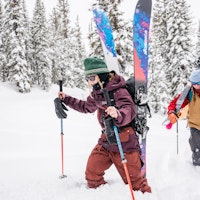
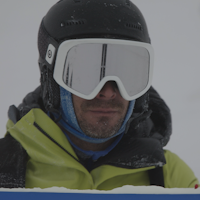
![[GIVEAWAY] Win a Legendary Ski Trip with Icelantic's Road to the Rocks](https://www.datocms-assets.com/163516/1765233064-r2r26_freeskier_leaderboard1.jpg?auto=format&w=400&h=300&fit=crop&crop=faces,entropy)


![[GIVEAWAY] Win a Head-to-Toe Ski Setup from IFSA](https://www.datocms-assets.com/163516/1765920344-ifsa.jpg?auto=format&w=400&h=300&fit=crop&crop=faces,entropy)


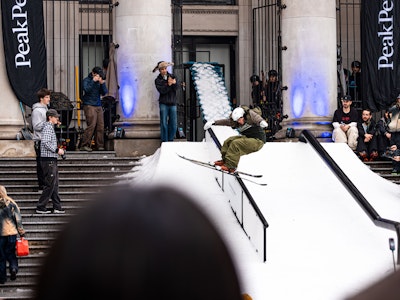
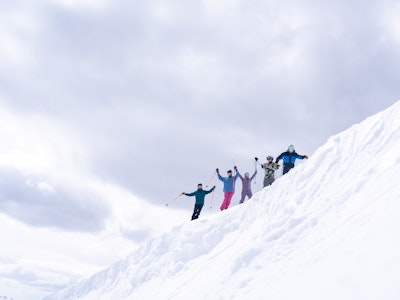
![[Tech Talk] FREESKIER's no-nonsense guide to buying bindings](https://www.datocms-assets.com/163516/1751500367-ttbindings_feat.png?auto=format&bg=FFFFFF&w=2000)